Silence has never looked so good. In a world that never stops buzzing, your backyard shouldn’t be one more thing shouting for your attention. It should whisper. It should breathe. It should feel like a deep exhale you didn’t know you needed. That’s where a little Zen magic comes in. We’re talking raked gravel, mossy corners, perfectly placed stones, and the kind of calm that sinks into your bones. No stress. No clutter. Just space to be. These 22 ideas aren’t about flashy features or fussy trends—they’re about crafting outdoor spaces that feel good. Ready to trade chaos for calm? You’re one scroll away.
Bamboo Fences
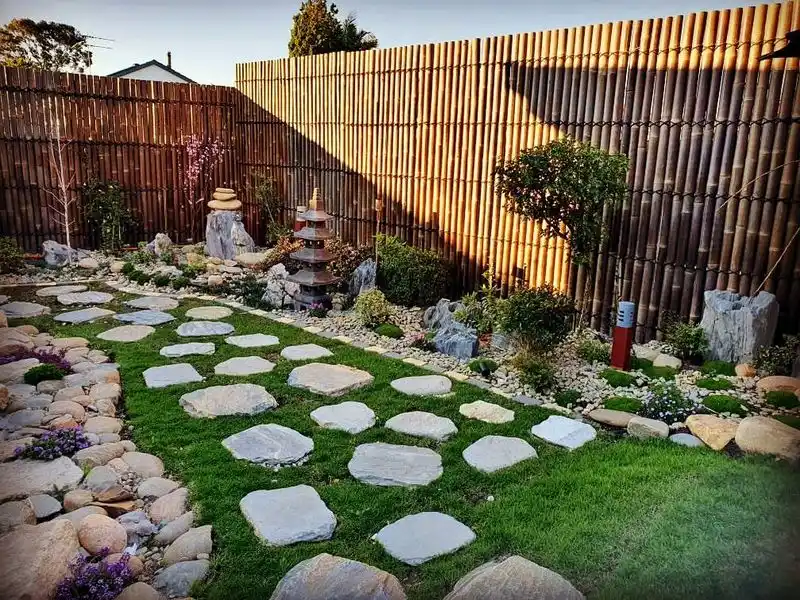
Bamboo fences offer a natural, elegant way to enclose spaces while maintaining an air of tranquility. Their natural color and texture blend seamlessly into a Zen garden, creating a boundary that feels organic rather than intrusive. An environmentally friendly option, bamboo grows quickly and is sustainable, making it perfect for eco-conscious gardeners. The gentle rustle of bamboo leaves in the wind adds a soothing auditory element, deepening the sense of peace in the garden. For the best effect, pair bamboo fences with stone pathways and water features to evoke a true Zen atmosphere.
Stone Pathways
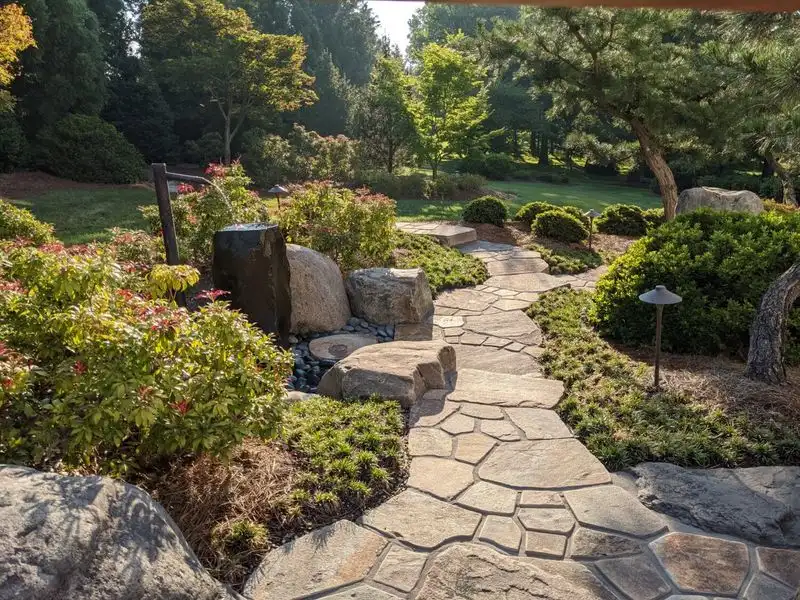
Stone pathways not only guide visitors through the garden but also serve as a conduit for meditative walks. The irregular shapes and varied textures of stones remind us of nature’s unpredictability, encouraging mindfulness with every step. Moss growing in the cracks provides a soft, vibrant contrast to the cold, hard stones, enhancing the natural aesthetic. Consider using different stone types to create visual interest or to mark distinct garden sections. As you walk along the path, the tactile sensation underfoot invites you to slow down and connect with nature.
Water Features
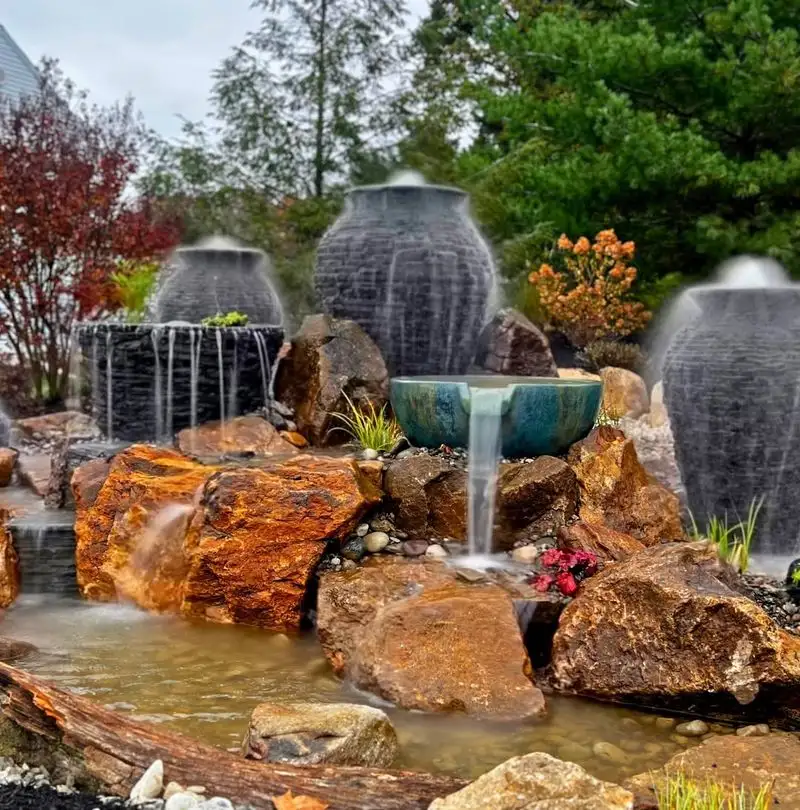
Water features such as ponds and fountains introduce the calming sound of flowing water, which is central to Zen landscaping. These elements can transform your garden into a sanctuary, inviting meditation and contemplation. Consider adding koi fish to a pond for an added touch of life and movement, symbolizing strength and perseverance. The reflections on the water’s surface create a dynamic interplay of light and shadow, adding depth and dimension to the garden. Position a simple bench nearby to provide a place for quiet reflection.
Rock Gardens

Rock gardens, or karesansui, focus on the artful arrangement of stones and gravel to evoke the essence of nature. Each stone is carefully selected for its shape and texture, symbolizing mountains or islands amidst the raked gravel that represents water. This minimalistic approach to gardening encourages mindfulness and introspection. Raking the gravel becomes a meditative practice, fostering a sense of calm and order. Rock gardens require minimal upkeep, allowing you to focus on the spiritual rather than the physical aspects of gardening.
Bonsai Trees
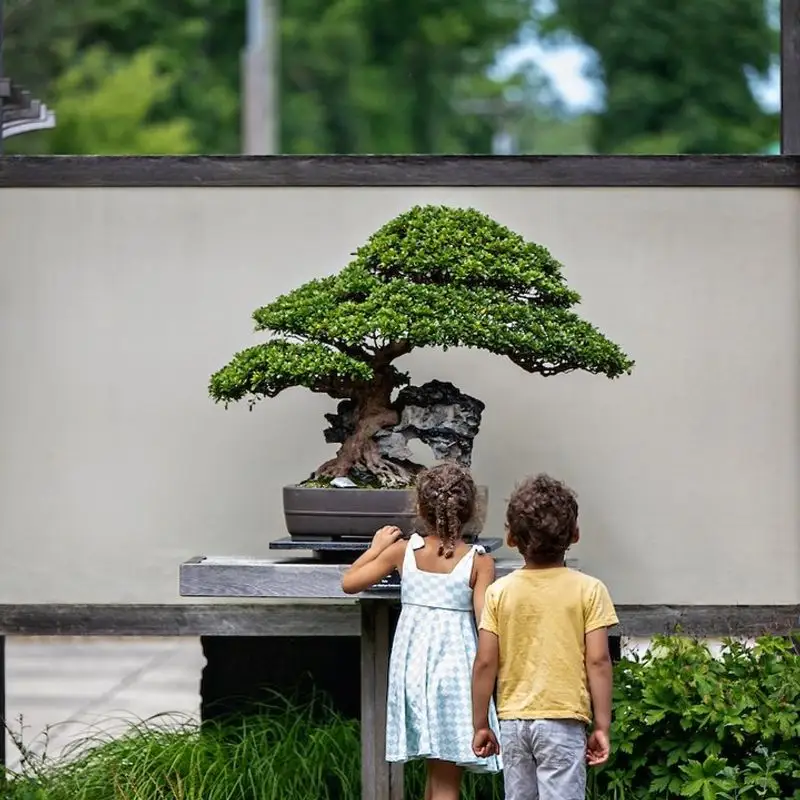
The art of bonsai involves cultivating miniature trees that reflect the grandeur of their larger counterparts. These meticulously pruned trees symbolize harmony, patience, and contemplation. Bonsai can be displayed indoors or outdoors, making them versatile additions to any Zen-inspired space. The process of training and caring for a bonsai tree itself is meditative, requiring attention and consistency. Each tree becomes a living sculpture, telling a unique story through its shape and form. Bonsai trees offer a tangible connection to nature’s enduring beauty.
Japanese Lanterns

Japanese lanterns bring a touch of historical elegance and soft illumination to a Zen garden. Often crafted from stone, these lanterns serve as both functional and decorative elements. Their presence evokes ancient Japanese gardens, where they were used to light paths and add mystical allure. Position lanterns along pathways or near water features to create focal points and enhance the garden’s ambiance. The delicate glow at dusk casts gentle shadows, inviting introspection and serenity. These lanterns can be a key part of your garden’s evening charm.
Sand Gardens

Sand gardens, or dry landscape gardens, use sand and gravel to represent water and sky. The practice of raking sand into patterns becomes a meditative act, channeling inner calm and creative expression. A single stone or a few well-placed rocks serve as focal points, symbolizing islands or mountains. These gardens require minimal maintenance, making them perfect for busy individuals seeking a peaceful retreat at home. The contrast between the smooth sand and rough stones adds a visually appealing texture to your landscape.
Zen Meditation Space
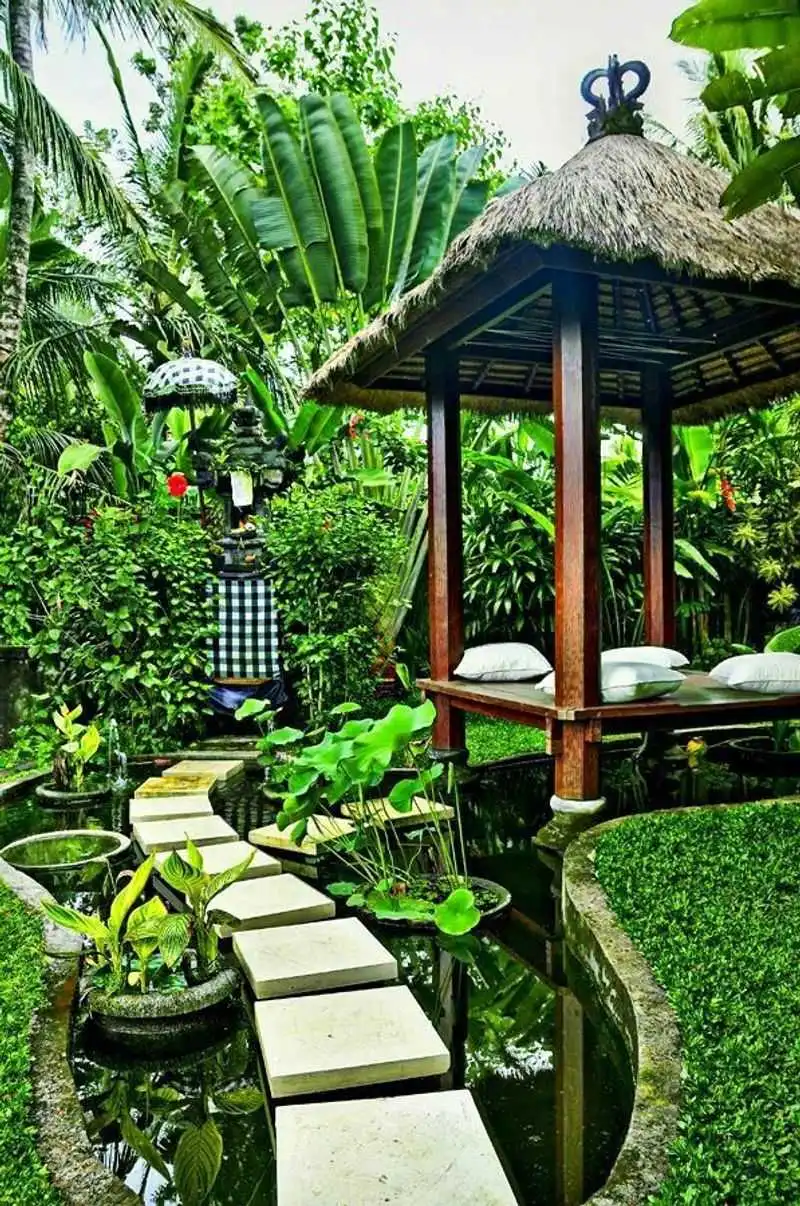
Creating a dedicated meditation area within your garden offers a sacred space for reflection and mindfulness. This area can be as simple as a cushion on a wooden deck or a secluded nook surrounded by plants. Consider placing it in a spot with a view of a calming feature like a water fountain or a bamboo grove. Incorporate natural materials like wood and stone to enhance the connection to nature. This personal sanctuary becomes a place to retreat from daily stresses, fostering mental clarity and spiritual growth.
Stepping Stones
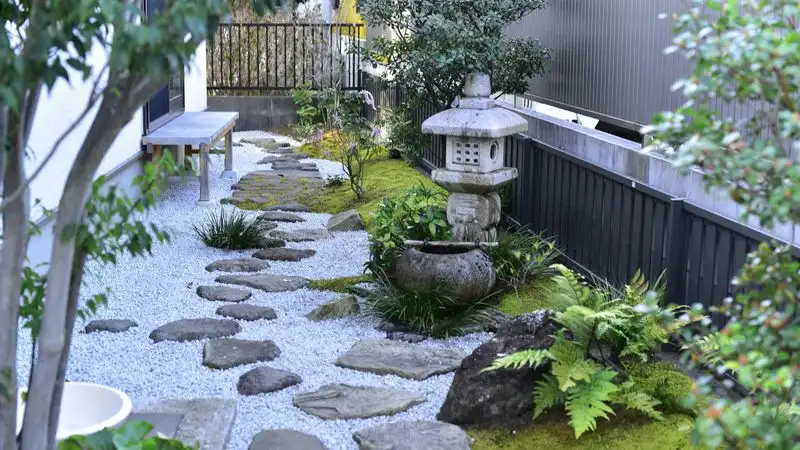
Stepping stones provide a playful yet orderly way to navigate your Zen garden. These stones can create pathways that meander through greenery, inviting contemplation and exploration. The varying shapes and sizes of stones mimic natural landscapes, with each step offering a new perspective. Placing stones over gravel or moss beds adds an element of surprise and texture. Walking on stepping stones can be a mindful practice, encouraging a slower pace and heightened awareness of one’s surroundings. An ideal addition to any peaceful garden setting.
Zen Garden Bridges

Bridges in Zen gardens symbolize the journey between the physical and spiritual worlds. Typically constructed from wood, they can span small streams or dry beds, adding an element of elevation and depth to the garden. Walking over a bridge becomes a symbolic act of transition, inviting reflection on one’s life path. The gentle curve of a bridge contrasts with the straight lines of traditional garden paths, adding variety and visual interest. Placed amidst bamboo and water features, bridges can serve as focal points that draw the eye and the spirit.
Lotus Ponds
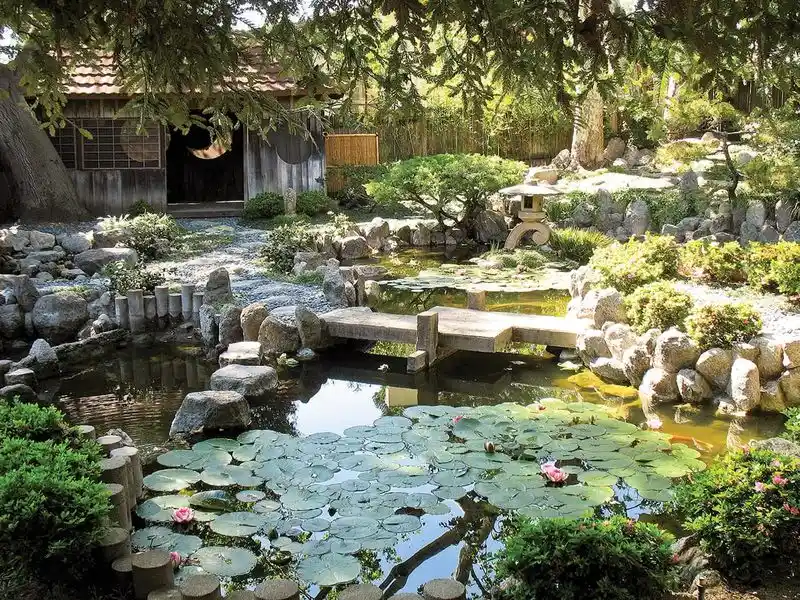
Lotus ponds are a quintessential element in Zen gardens, representing purity and enlightenment. The lotus flower, rising from murky waters to bloom in the sunlight, symbolizes spiritual awakening. Adding a lotus pond to your garden can create a focal point that inspires peace and reflection. The gentle movements of the water, combined with the vibrant colors of the lotus blossoms, create a dynamic and soothing visual experience. These ponds attract wildlife, enhancing the garden’s liveliness and connection to nature.
Moss Gardens
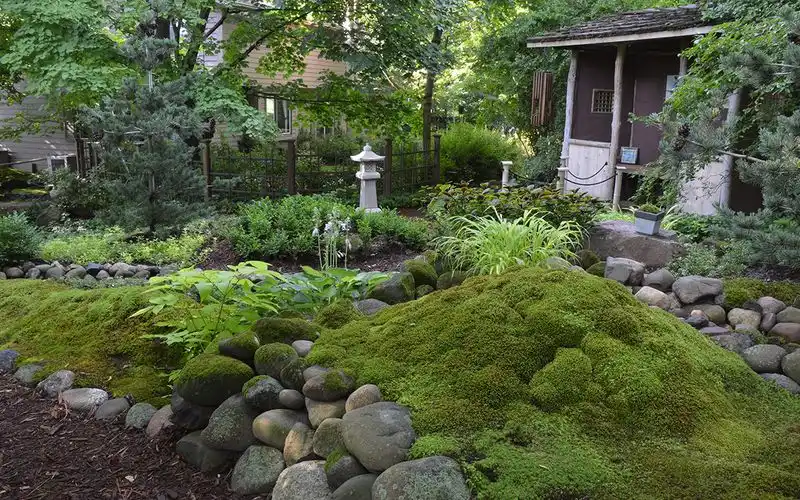
Moss gardens offer a rich texture and vibrant green that perfectly complements a Zen landscape. Moss thrives in shaded, moist environments and requires minimal maintenance, making it an ideal ground cover for tranquil gardens. The softness and lushness of moss invite touch and exploration, adding a sensory dimension to your garden. Arranging stones and small ferns among the moss creates a natural, miniature landscape that draws the eye and calms the mind. This living carpet of green provides a serene backdrop for reflection and meditation.
Minimalist Plantings
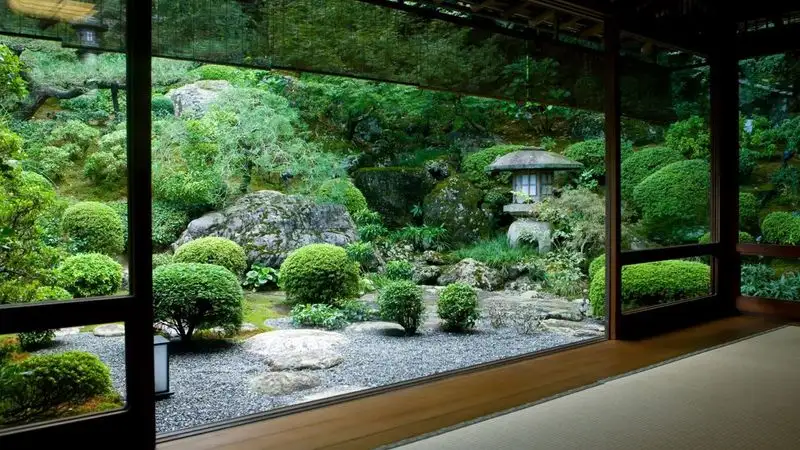
Minimalist plantings embrace the Zen philosophy of simplicity and balance. By carefully selecting and positioning a few key plants, you can create a garden that feels spacious and uncluttered. Focus on plants that offer interesting shapes, textures, and seasonal interest. The restraint in plant choice and placement allows the eye to rest and the mind to quiet, promoting a sense of peace. This approach works well in small spaces or as a contrast to more densely planted areas, providing visual relief and harmony.
Vertical Gardens
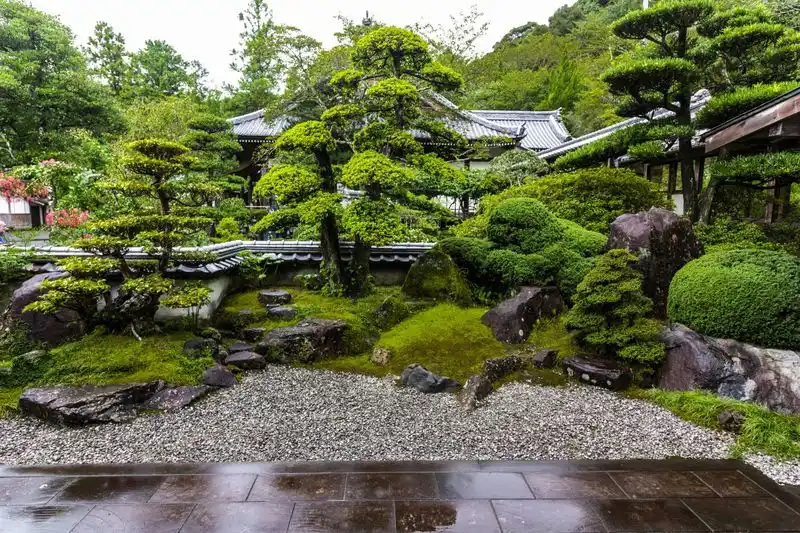
Vertical gardens transform walls into living canvases, offering a unique way to incorporate greenery into your Zen space. These installations can maximize space in small gardens or add interest to larger landscapes. The layers of plants create a tapestry of textures and colors that draw the eye upwards, inviting contemplation. Vertical gardens can also improve air quality and provide insulation, making them a functional as well as aesthetic addition. Choose plants that suit your climate and maintenance preferences for a thriving vertical oasis.
Japanese Maple Trees
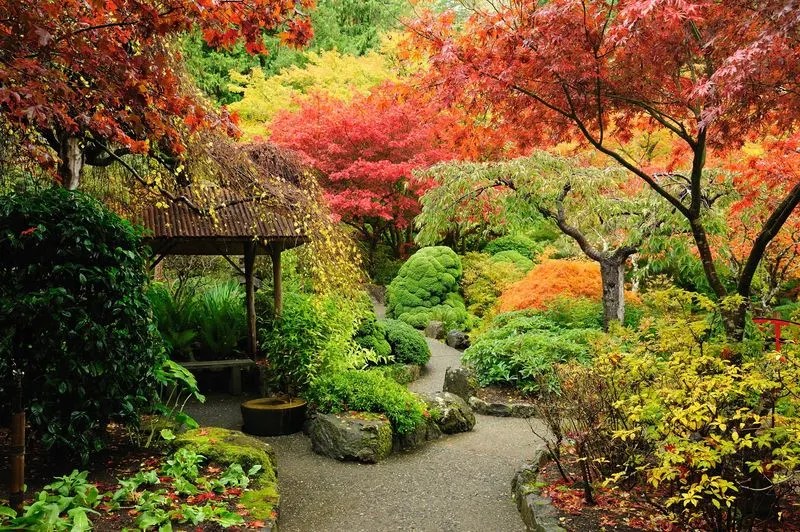
Japanese maple trees are prized for their delicate leaves and stunning seasonal color changes. These trees can serve as focal points in a Zen garden, drawing attention and admiration. Their graceful, spreading branches create a canopy that provides dappled shade and a sense of shelter. Whether as a solitary specimen or part of a group planting, Japanese maples add elegance and depth to the landscape. Their presence enhances the garden’s sense of tranquility, reflecting the beauty and impermanence of nature.
Tea Gardens

Tea gardens, or chaniwa, are designed as spaces for the traditional Japanese tea ceremony, embodying simplicity and elegance. These gardens feature carefully arranged elements such as stone paths, lanterns, and water basins, leading to a tea house. The journey through the garden is meant to prepare the mind for the calm ritual of tea-making. Incorporating a tea garden into your landscape offers a unique cultural experience and a serene place for reflection. Even without a tea house, the careful arrangement of garden elements can evoke the spirit of tea gardens.
Moon Gates
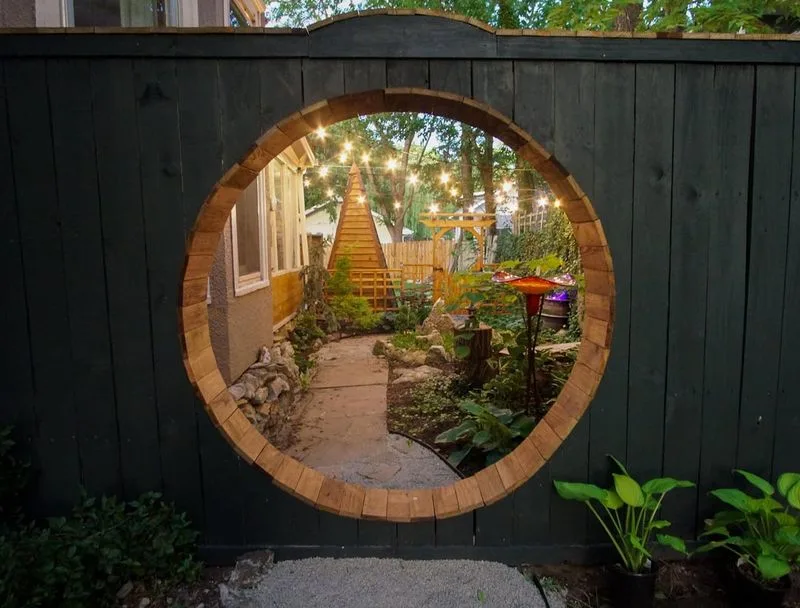
Moon gates are circular openings that serve as entrances to gardens, symbolizing transition and discovery. Their unique shape draws the eye and invites exploration, creating a sense of mystery and wonder. Often framed by bamboo or flowering plants, moon gates provide a striking focal point and a dramatic entryway. Passing through a moon gate is a symbolic act, marking a shift from the outer world to the contemplative space within the garden. These gates add architectural interest and convey a sense of harmony and balance.
Succulent Arrangements
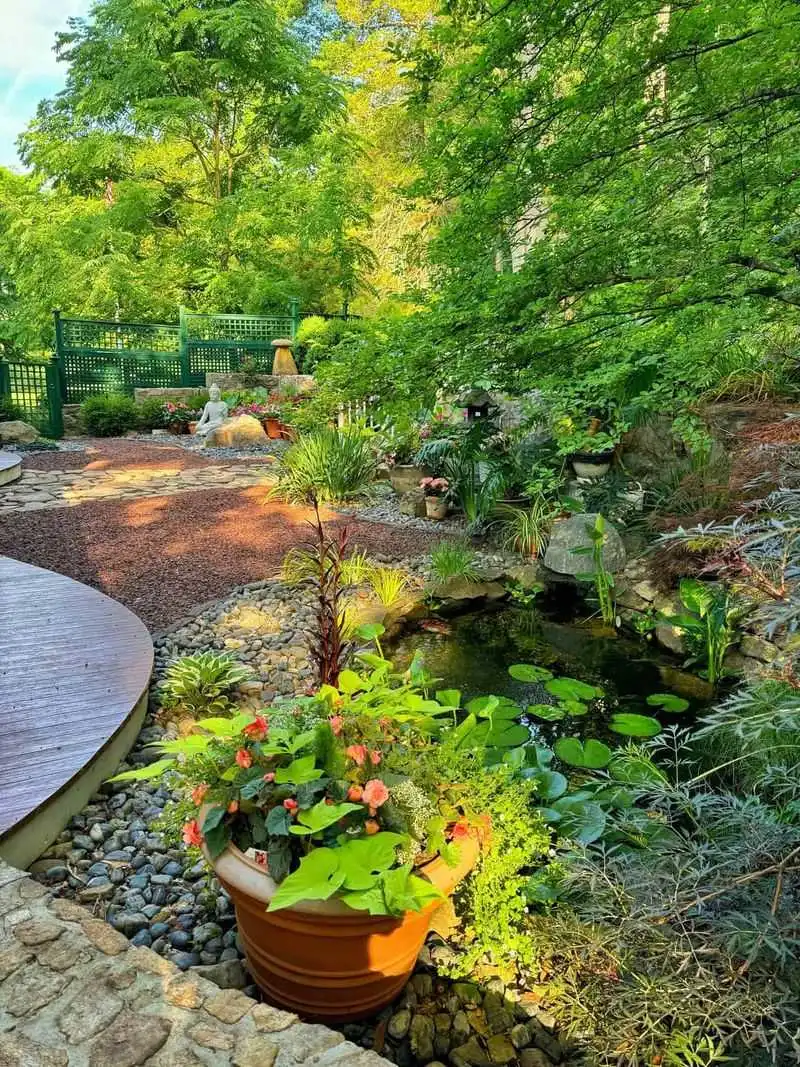
Succulent arrangements offer a modern twist on traditional Zen garden elements, with their diverse forms and textures. These drought-tolerant plants can be artfully arranged in containers or garden beds, providing visual interest and low-maintenance beauty. The variety of colors and shapes available in succulents allows for creative expression and unique garden compositions. Their resilience and adaptability make them suitable for various climates and garden styles. Succulent arrangements can serve as focal points or complementary elements in a Zen-inspired landscape.
Garden Sculptures
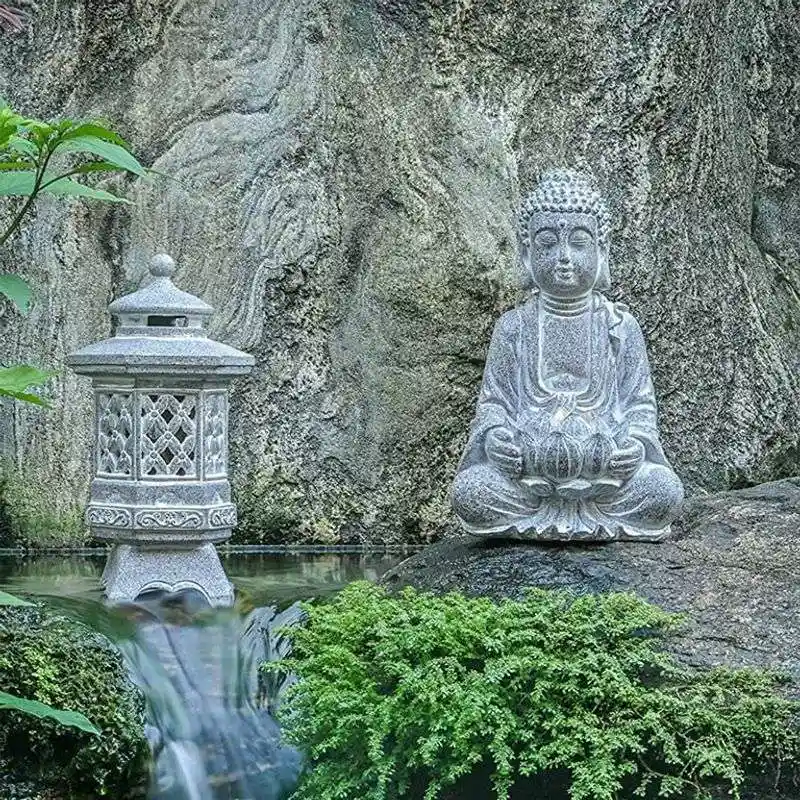
Sculptures in a Zen garden can introduce an element of art and intrigue, offering visual and symbolic depth. Choose pieces that resonate with the garden’s style and philosophy, such as abstract forms or natural materials like stone and wood. Sculptures can serve as focal points or subtle accents, depending on their size and placement. They invite contemplation and add a personal touch to the garden, reflecting the owner’s taste and sensibilities. The presence of art in the garden enhances its beauty and enriches the visitor’s experience.
Raking Patterns
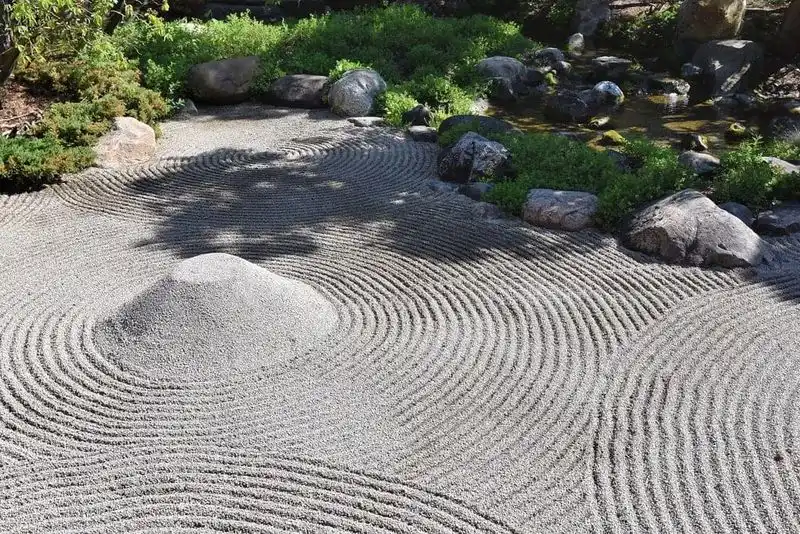
Raking patterns in a Zen garden transform simple gravel into a canvas for expression. The act of raking becomes a meditative practice, allowing the gardener to focus and find peace in the creation of lines and curves. Patterns can be changed regularly, providing a dynamic and ever-evolving landscape. These designs mimic the natural flow of water, wind, or other elements, adding a layer of complexity to the garden. Raking patterns offer a tactile and visual experience, enhancing the garden’s serene atmosphere.
Herb Gardens
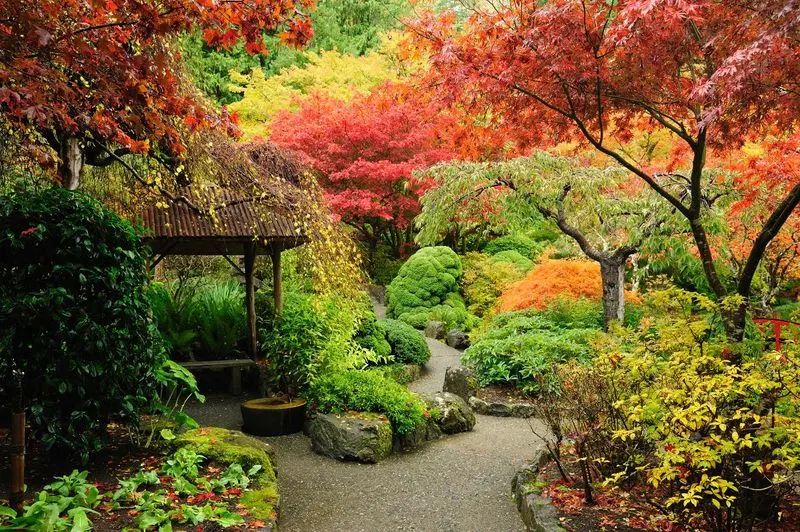
Herb gardens introduce a sensory dimension to Zen landscaping, engaging the sense of smell with aromatic plants like basil, mint, and lavender. These gardens can be both beautiful and functional, providing fresh herbs for culinary and medicinal uses. The structure of herb beds can reflect Zen principles of order and symmetry, while the variety of textures and scents adds richness to the garden. Located near a kitchen or pathway, an herb garden invites interaction and exploration, enhancing the overall experience of the garden.
Whimsical Wind Chime Symphony
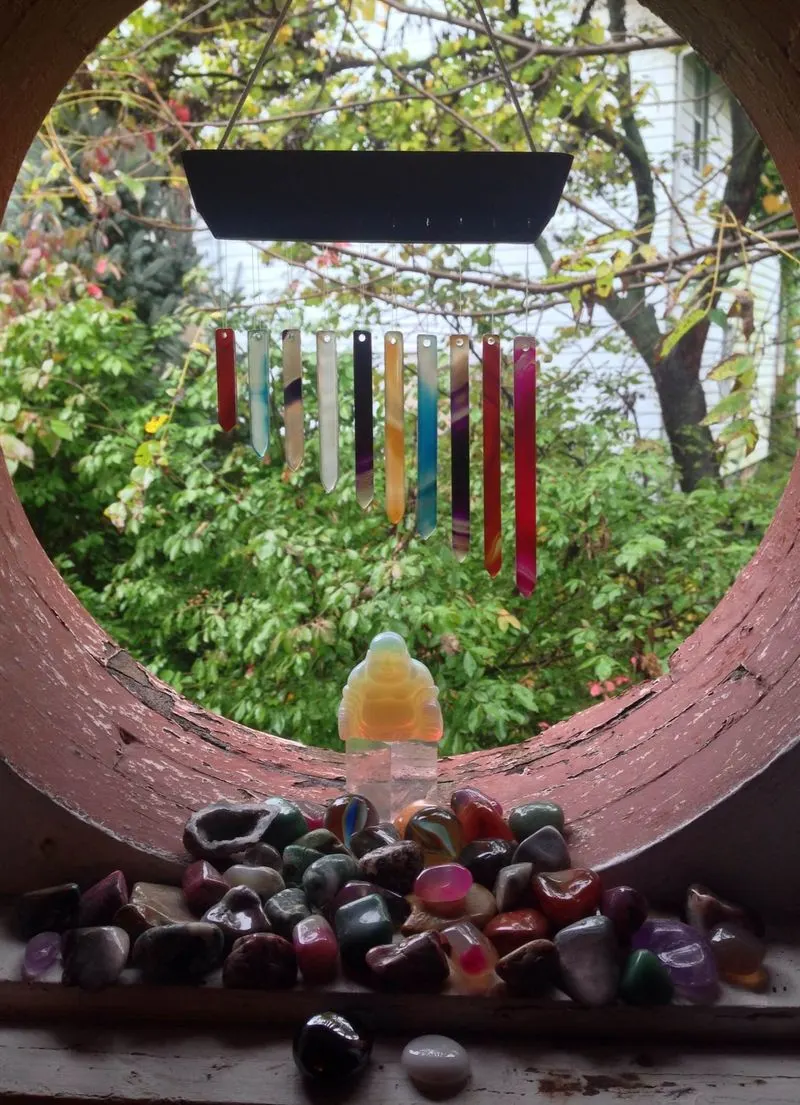
Imagine a garden that sings in the wind. A whimsical wind chime arrangement creates a delightful symphony of sounds. Hang an eclectic mix of objects, like teapots, seashells, and driftwood, from tree branches. Each breeze brings soft tones that dance through the air, adding an auditory layer to your serene space.
Position them where the wind is gentle but frequent, ensuring their melody becomes part of your garden’s heartbeat. The combination of unexpected materials and soothing sounds fosters a sense of wonder and tranquility, making your garden a unique oasis. Engage all senses in a peaceful symphony of nature.

